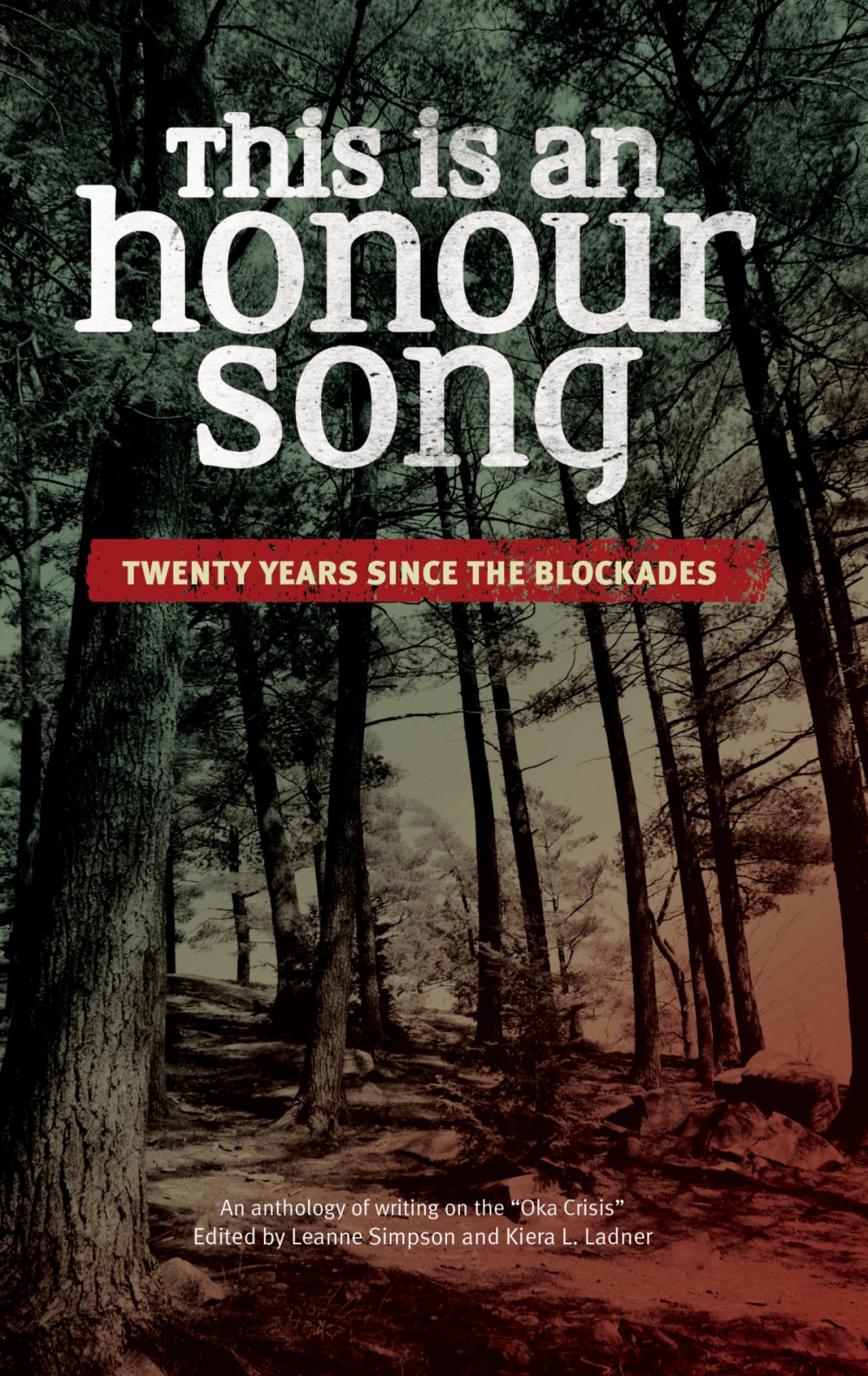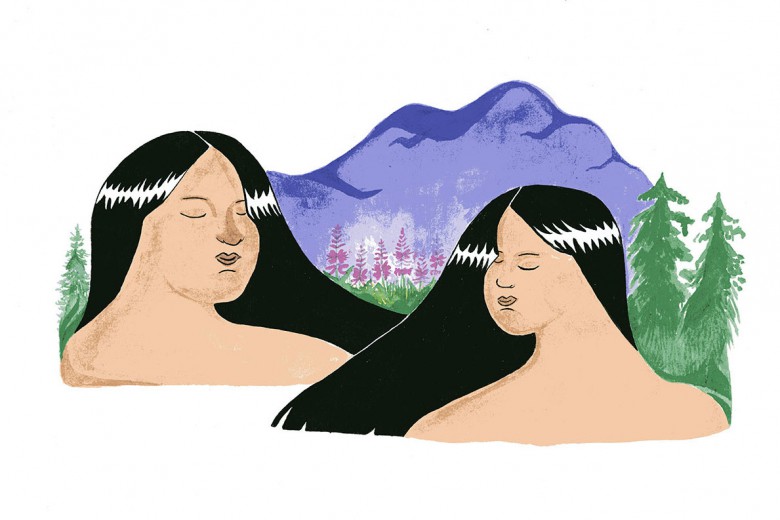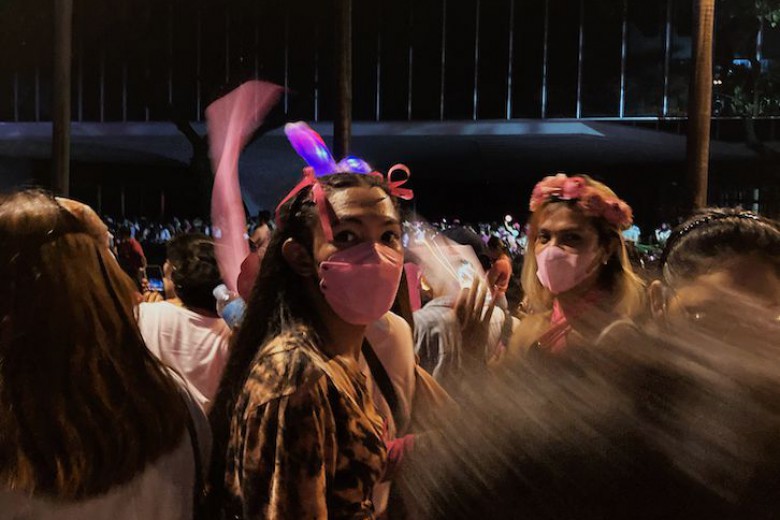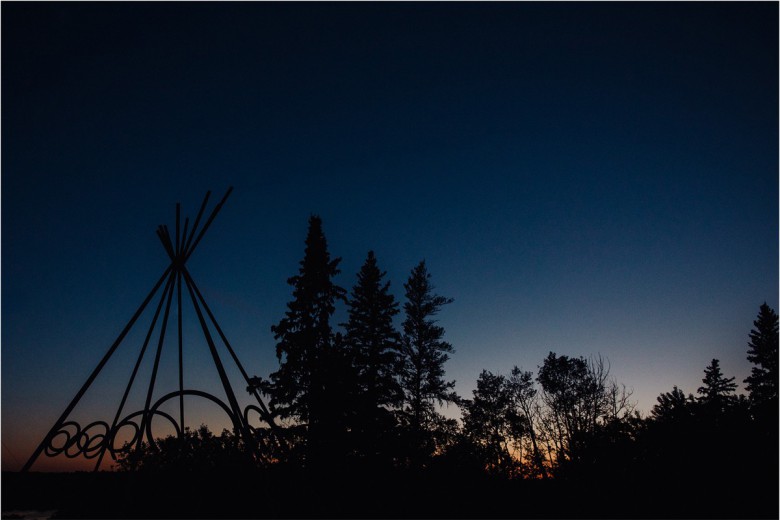
This is an Honour Song: Twenty Years Since the Blockades
By L. Simpson and K. Ladner
Arbeiter Ring Publishing, 2010
In the summer of 1990, a group of Kanien’kehaka (Mohawk) people took a stand in defence of their territories. Conventionally known as the Oka Crisis, that summer represented a flashpoint in the relationships between settlers and Indigenous peoples in Canada. While the land dispute ostensibly centred on a proposed golf course to be built over a sacred grove of pines, it represented something far larger. For the Kanien’kehaka of Kanehsatake, it represented the culmination of hundreds of years of resistance to colonial policies. For Indigenous peoples across North America, particularly those contending with the Canadian state, it signalled the continued resilience and strength of Indigenous peoples in the face of brute colonial aggression.
Leanne Simpson and Kiera Ladner’s new edited collection, This is an Honour Song, seeks to recognize the significance of the events at Kanehsatake for Indigenous peoples, as well as for Canada. The collection does not focus on rehashing the details of events at the pines (a number of good books already exist in this regard), but explores the broader resonance and echoes of the Kanien’kehaka resistance. While the situation in Kanehsatake remains appallingly static (an epilogue by Ellen Gabriel demonstrates the continued dispossession of Kanien’kehaka land and denial of Kanien’kehaka sovereignty), the events there triggered a political resurgence that continues today. Twenty years after the blockades, the artists, academics and activists whose works comprise this collection reflect on the significance of the summer of 1990.
While the TV images of the Oka crisis — masked warriors standing face to face against the Canadian military — instilled fear in many settler communities, to Indigenous eyes the Kanien’kehaka looked like aunties, uncles and cousins, not terrorists. In powerful personal reflections, several authors contemplate the significance of that “crisis” to their own cultural reclamations. Wab Kinew, a Winnipeg-based Anishinaabe hip-hop artist and CBC radio producer/host, describes that summer as “the summer that we stopped playing Cowboys and Indians and started being warriors.” For many Indigenous peoples, this was not a crisis for Oka, but a long-due resurgence of suppressed nationhood. Clayton Thomas-Muller, Cree activist and tar sands campaigner for the Indigenous Environmental Network, describes it as the summer “I realized our power as Indigenous nations.”
As the character Isaiah from Douglas Nepinak’s play, The Crisis in Oka, Manitoba, states, Oka demonstrated how “being born an Indian in Canada is a political act.” From theatre to film, from artistic instalments to poetry, This is an Honour Song demonstrates how the summer of 1990 fuelled a resurgence of Indigenous art as a form of political resistance. The book includes the work of visual artists such as Robert Houle, Rebecca Belmore, Shelley Niro, and Gerald McMaster, alongside poetry, Nepinak’s play, and essays on art and resistance. Works such as Greg Hill’s The Lone Ranger and “ , a multimedia image of the destroyed original, presenting the Lone Ranger absent his “faithful scout” Tonto, demonstrate the distance between Cowboy and Indian and position the events at Kanehsatà :ke as a microcosm of colonial unrest across North America.
Contributors from the Canadian settler community reflect upon how the Oka crisis unsettled prevailing myths. While Robinder Kaur Sehdev explores the possibility for anti-racist linkages between people of colour and Indigenous peoples, Sheila Gruner and Richard Day examine the challenges involved in developing relations of solidarity between white folks and Indigenous peoples. Essays by Peter Russell and June McCue articulate the vital role events like Oka play in demonstrating the fundamental flaws within the colonial common sense. While often divisive, Russell argues such events are necessary as “clear and sharp signals” that Indigenous rights must be respected by Canadian governments.
These signals have not been lost but continue to echo in continued Indigenous struggles for justice today. Activists such as Melina Laboucan-Massimo of the Lubicon Cree and Jacob Ostaman of Kitchenuhmaykoosib Inninuwug describe their communities’ continued struggle to protect their lands from development.
Beyond the minimalism of survival as peoples, Kanien’kehaka scholar and mother Patricia Monture demands that Indigenous peoples have a right to celebrate.
“Justice” she writes, “is a broader concept intended to capture the idea that we can live at peace and live in balance in our relations. “ Justice includes the right to live by your own laws and traditions as well as having others respect the legitimacy of those systems. It is then, and only then, that the right to celebrate who you are exists.” It is this sentiment of celebration that This Is an Honour Song embodies and promotes.






